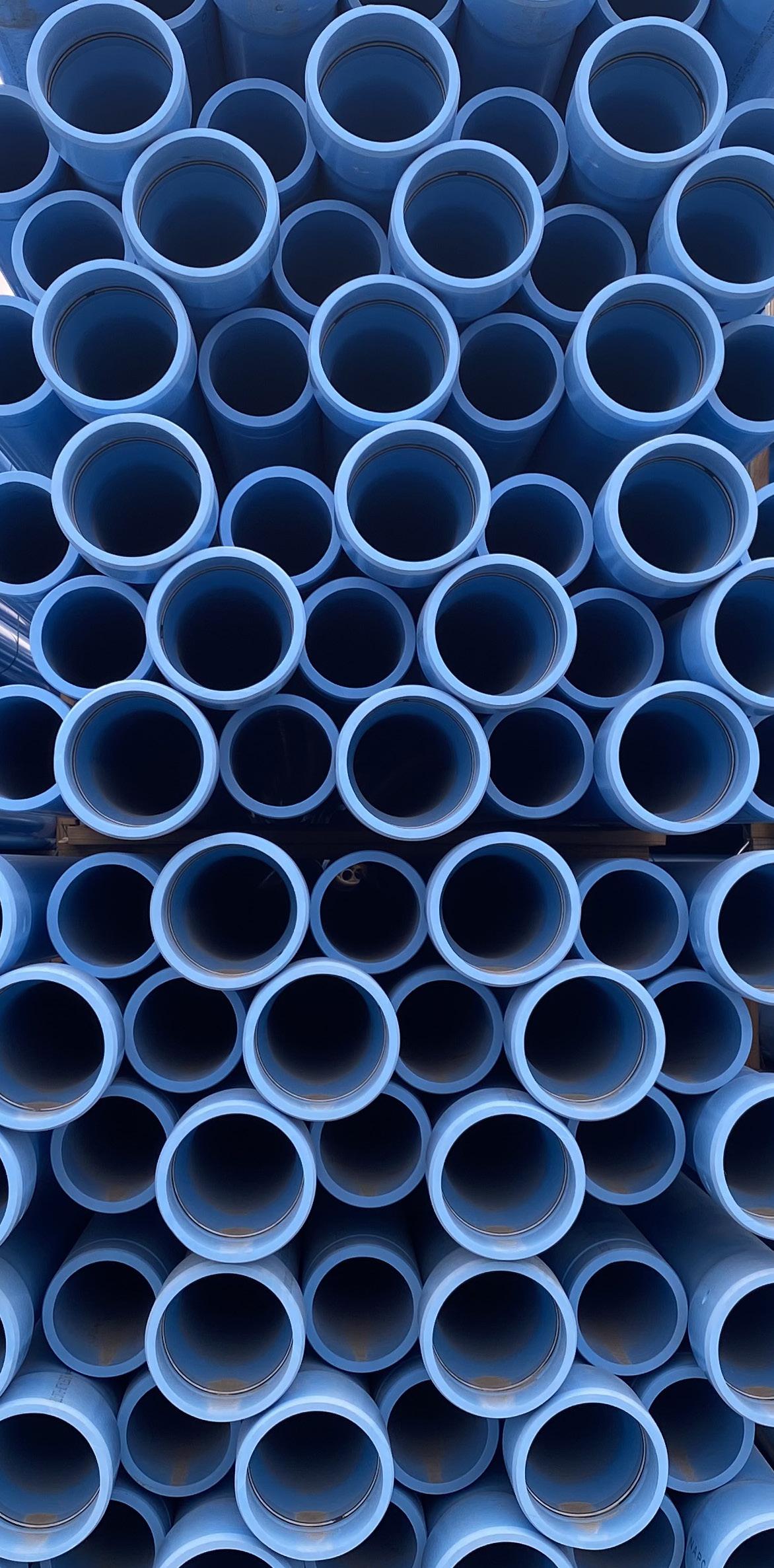2022 WATER QUALITY REPORT
Consumer Confidence Report for January 1 - December 31, 2022
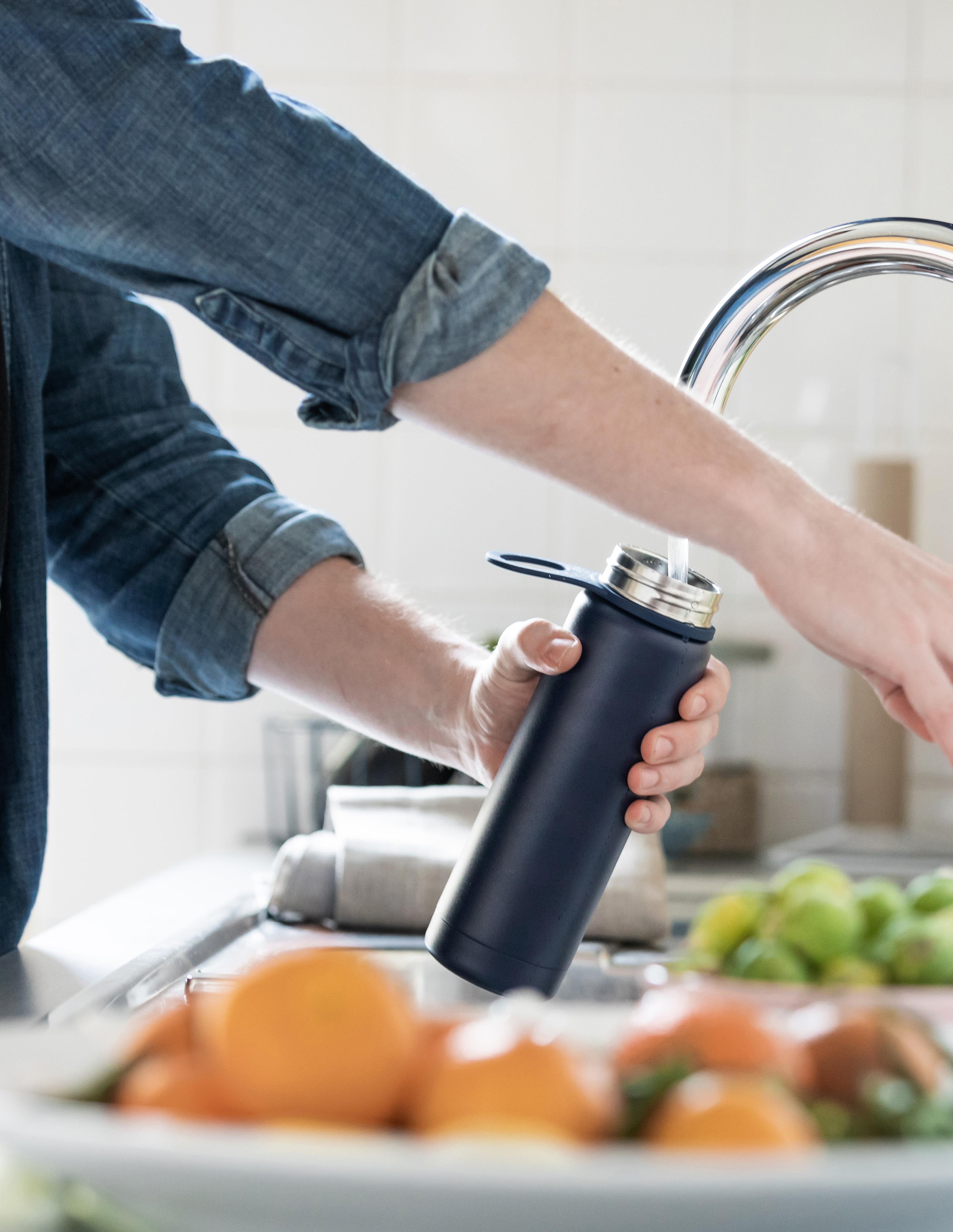

Consumer Confidence Report for January 1 - December 31, 2022

Many of us often take for granted the precious resource that flows from our faucets — safe and reliable drinking water.
Metropolitan Utilities District (M.U.D.) is proud to present the 2022 Water Quality Report, which provides an overview of your drinking water from the source to the tap. Your water continues to meet or exceed all state and federal standards for drinking water.
M.U.D. operates and maintains more than 3,100 miles of mains that deliver clean drinking water to the taps of 225,028 homes and businesses in the metro Omaha area, serving a population of nearly 600,000. M.U.D. serves an average of 90 million gallons of water per day to the community and maintains more than 27,000 hydrants for fire protection.
We operate three water treatment plants, which provide a reliable water supply and also allow us to take facilities out of service as needed for system maintenance or improvements. Some of our infrastructure dates back to the 1880s and one of the challenges this poses is water main breaks. In 2022, there were 597 water main breaks.

To improve system reliability, M.U.D. began a program in 2008 to replace and update critical infrastructure. Prioritization of water main replacements is based on a sophisticated risk model and asset management plan that considers a variety of factors, including break history, type of pipe and consequence of failure. Customers fund this program through water infrastructure fees on their monthly bill. In 2022, we replaced nearly 16 miles of targeted water mains and completed condition assessment on an additional 2.1 miles of water main.
M.U.D. is working diligently to ensure a safe and reliable drinking water supply to our customerowners, as well as safeguarding the water system for future generations.
The Safe Drinking Water Act requires public water supply systems to prepare annual water quality reports for customers to receive accurate, comprehensive information about their water supply.
For more information, call 402.554.6666 or visit mudomaha.com.
Sources of drinking water (tap and bottled water) include rivers, lakes, streams, ponds, reservoirs, springs and groundwater wells. As water travels over the surface of the land or through the ground, it dissolves naturally occurring minerals and, in some cases, radioactive material, and can pick up substances resulting from the presence of animals or human activity.
Sources of M.U.D. tap water include the Missouri and Platte Rivers and the Dakota sandstone aquifer. These sources are categorized as surface water (Missouri River), groundwater under-thedirect-influence of surface water (Platte River) and groundwater. Water is pumped from intakes and wells maintained by the District.
The Nebraska Department of Environmental Quality (NDEQ) completed the source water assessment which includes a wellhead protection area map, potential contaminant source inventory, vulnerability rating and source water protection information.
To better protect the quality of the water in our wellfields, we have wellhead protection plans for our Platte South and Platte West wellfields.
Wellhead protection is the management of the land surrounding a water supply well to prevent contamination of the water supply. The plans provide a detailed account of the potential threats to the facilities and a summary of existing and recommended management strategies.
To view the source water assessment report or the wellhead protection plans, visit mudomaha.com and use the search tool to look for the plans.
If you have additional questions, please call Customer Service at 402.554.6666 or email customer_service@mudnebr.com.
Three treatment plants form a “Triangle of Reliability”
M.U.D. operates three water treatment plants — Florence, Platte West and Platte South — to serve the water supply needs of the metro Omaha area. M.U.D. also operates and maintains more than 3,000 miles of mains that deliver safe drinking water to the taps of 225,028 homes and businesses. We serve an average of 90 million gallons of water per day to the community and maintain more than 27,000 hydrants for fire protection.
1 2 3 4
Sedimentation
Settle out silt
Clarification & Softening
Remove silt and hardness (some minerals)
Disinfection
Destroy bacteria and parasites
Filtration
Remove very fine suspended matter
We use chloramines in the water treatment process to kill bacteria that cause diseases such as typhoid and cholera. Approximately 20% of water supply systems in the U.S., including Council Bluffs and Lincoln, use chloramine as a disinfection agent.
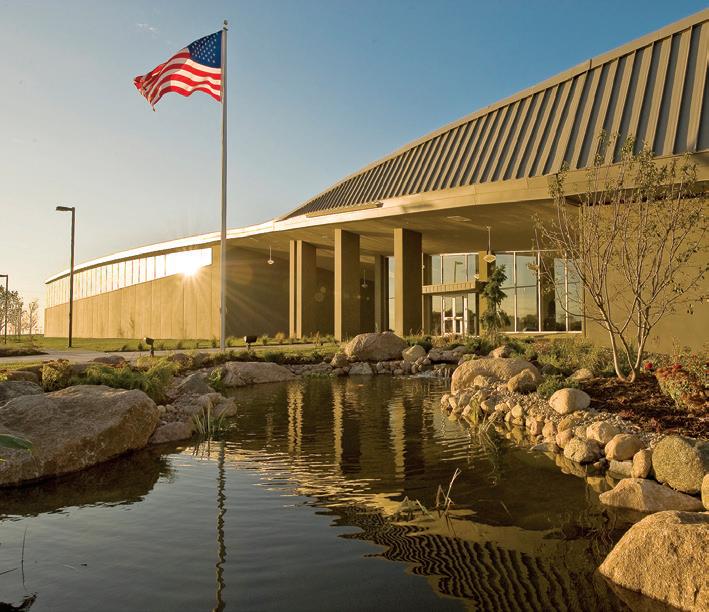
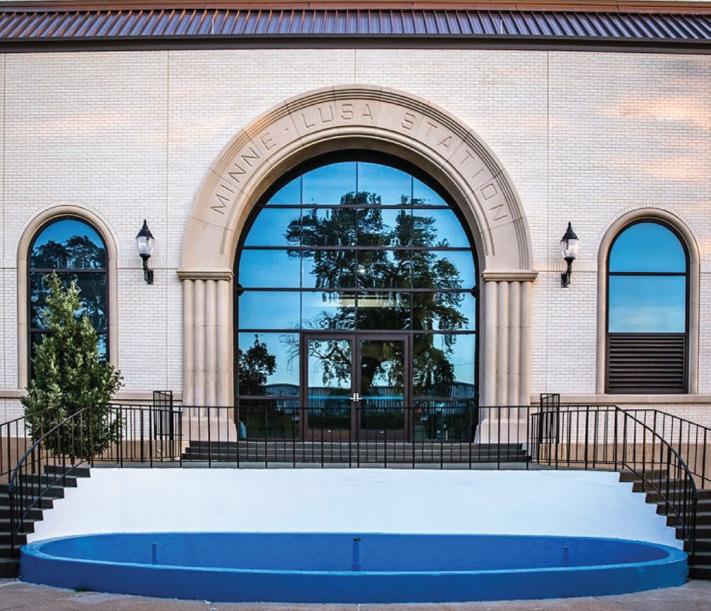
Chloramine, a mixture of chlorine and ammonia, does not dissipate through boiling or exposure to the air in open containers as rapidly as chlorine. Chloraminated water is safe for warm-blooded animals to drink, including humans, kidney dialysis patients, pregnant women, infants, dogs, cats and birds, because
their digestive systems neutralize chloramine before it reaches their bloodstreams.
Chloramine is toxic to cold-blooded animals, such as fish, reptiles, turtles and amphibians because it enters directly into their bloodstreams. Fish tank, aquarium and pond owners need to use filtration equipment or water treatment products to neutralize chloramines. These products are available at pet supply stores.
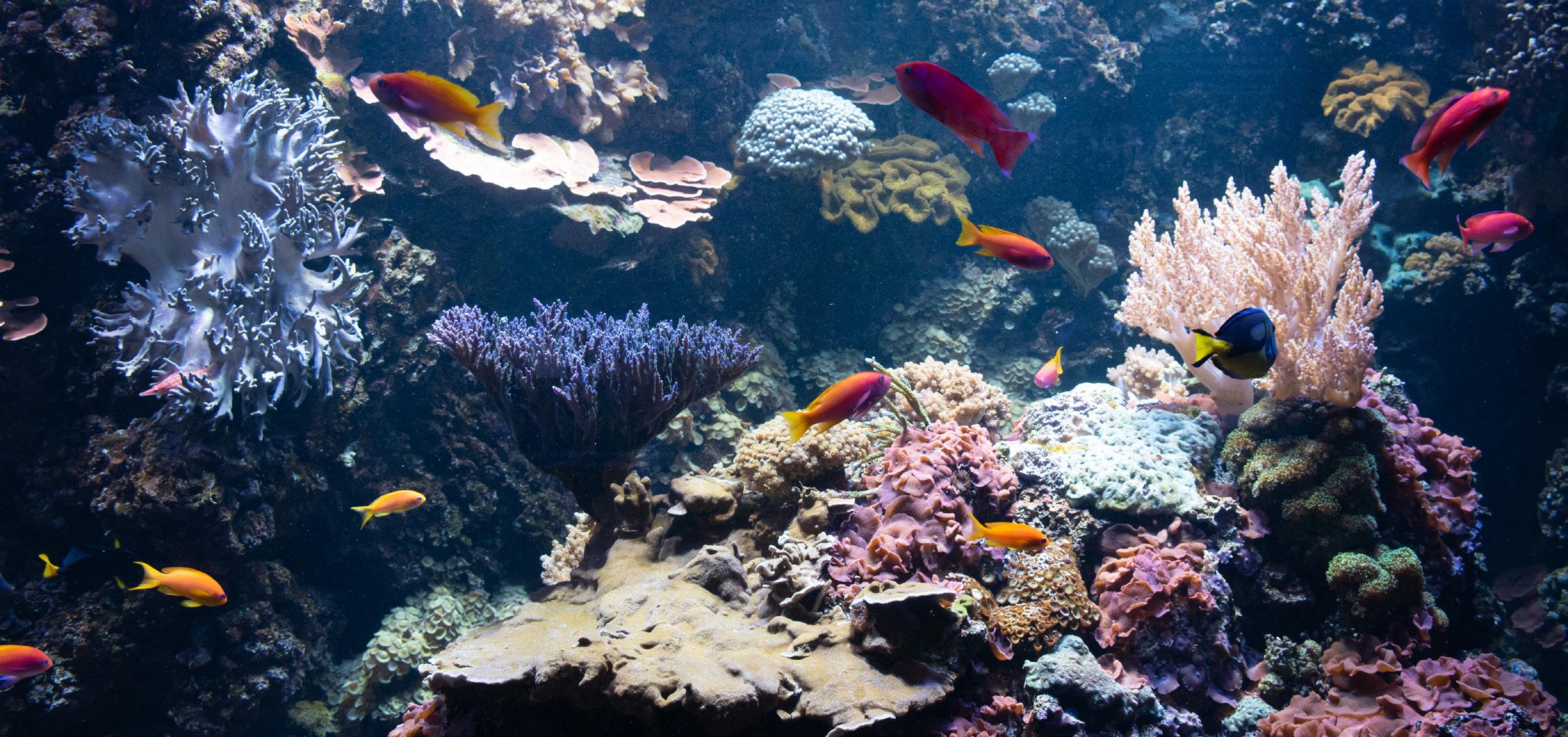
Before use in a home kidney dialysis system, the water must be treated. Check with your equipment supplier and/or physician.
M.U.D. adds fluoride to its treated water to promote dental health. Omaha voters approved fluoridation in 1968. In 2008, the Nebraska Unicameral passed LB 245 which requires all Nebraska cities and towns with populations over 1,000 to add fluoride to public water systems. Both the Missouri and Platte Rivers have naturally-occurring fluoride in the range of 0.3 to 0.5 parts per million (ppm). The District adds enough fluoride to make the tap water concentration approximately 0.7 ppm, well below the federal limit of 4.0 ppm.
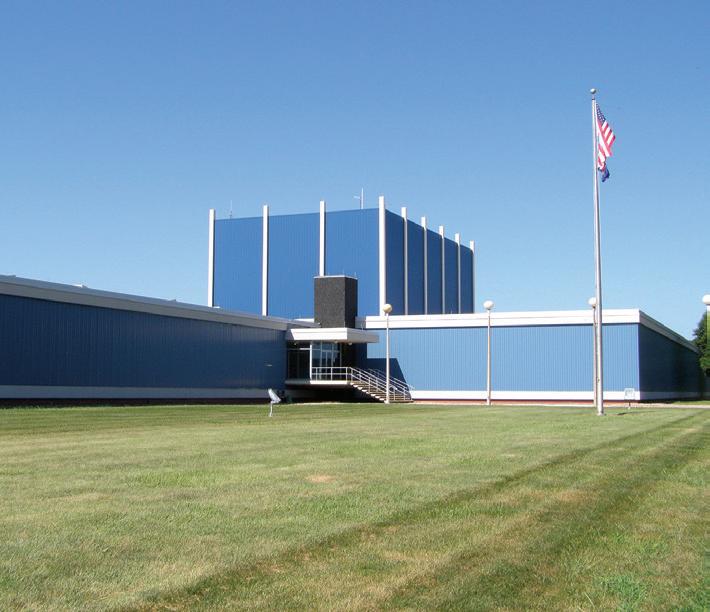
M.U.D. IS REQUIRED TO TEST FOR THE FOLLOWING CONTAMINANTS: 1,1,1,2-TETRACHLOROETHANE
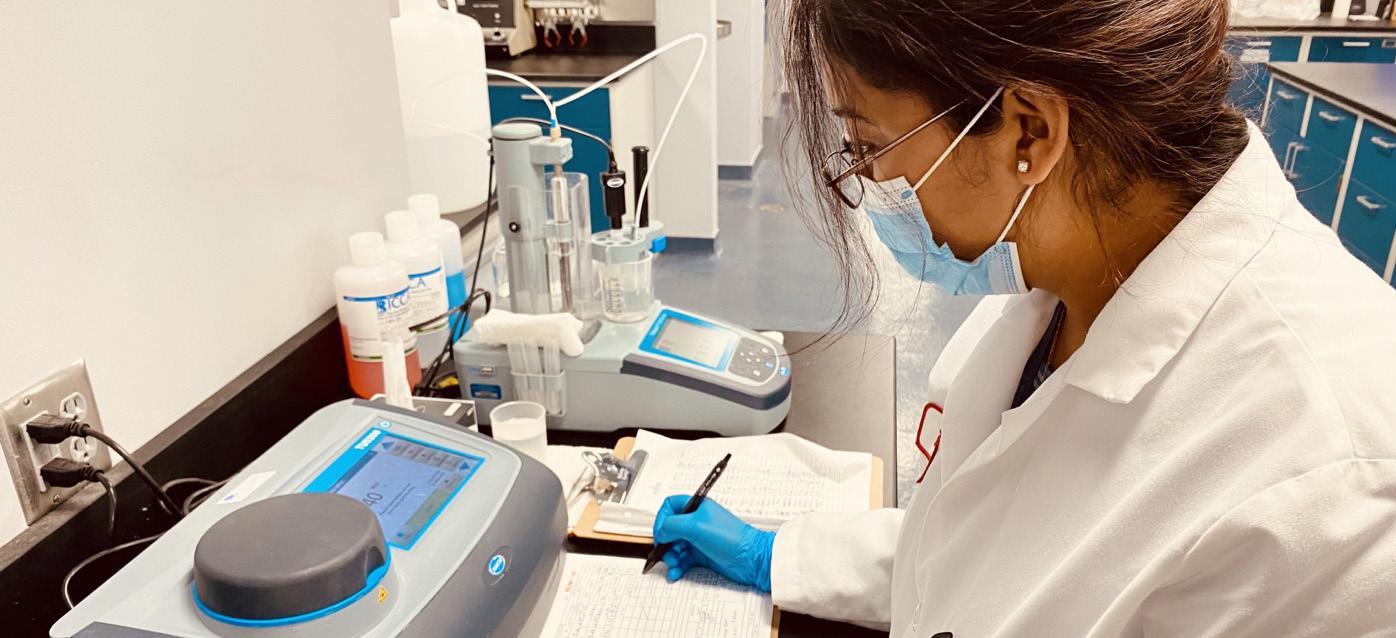
ATRAZINE
BARIUM
BENZENE
BENZO(A)PYRENE
BERYLLIUM
BHC-GAMMA (LINDANE)
BROMOBENZENE
BROMOCHLOROACETIC ACID
BROMOCHLOROMETHANE
CYANAZINE
CYANIDE
CYLINDROSPERMOPSIN
DALAPON
DI(2-ETHYLHEXYL) ADIPATE
DI(2-ETHYLHEXYL) PHTHALATE
DIBROMOACETIC ACID
DIBROMOCHLOROMETHANE
DIBROMOMETHANE
HEXACHLOROCYCLOPENTADIENE
IRON
ISOPROPYLBENZENE
LASSO (ALACHLOR)
LEAD
M-DICHLOROBENZENE
MERCURY
METHOMYL
METHOXYCHLOR
PICLORAM
PROPACHLOR
RADIUM-226
RADIUM-228
SEC-BUTYLBENZENE
SELENIUM
SIMAZINE
STYRENE
SULFATE
1,2,4-TRIMETHLYBENZENE
1,2-DIBROMO-3-CHLOROPROPANE (DBCP)
1,2-DICHLOROETHANE
1,2-DICHLOROPROPANE
1,3,5-TRIMETHYLBENZENE
1,3-DICHLOROPROPANE
2,2-DICHLOROPROPANE
2,4,5-TP (SILVEX)
2,4-D 3-HYDROXYCARBOFURAN
ALDICARB
ALDICARB SULFONE
ALDICARB SULFOXIDE
ALDRIN
ANATOXIN-A
ANTIMONY
AROCHLORS (POLYCHLORINATED BIPHENYLS)
ARSENIC
ASBESTOS
BROMODICHLOROMETHANE
BROMOFORM
BROMOMETHANE
BUTACHLOR
CADMIUM
CARBARYL
CARBOFURAN
CARBON TETRACHLORIDE
CARBON (TOTAL ORGANIC CARBON)
CHLORDANE
CHLOROBENZENE
CHLOROETHANE
CHLOROFORM
CHLOROMETHANE
CHLOROPYRIFOS
CHROMIUM
CIS-1,2-DICHLOROETHYLENE
CIS-1,2-DICHLOROPROPENE
COLIFORM BACTERIA
COPPER
Detected contaminants results are listed in the following pages: 8 - 11
DICAMBA
DICHLOROACETIC ACID
DICHLORODIFLUOROMETHNE
DICHLOROMETHANE
DIELDRIN
DINOSEB
DIQUAT
E. COLI
ENDOTHALL
ENDRIN
ETHYLBENZENE
ETHYLENE DIBROMIDE (EDB)
FLUORIDE
FONOFOS
GROSS ALPHA, INCLUDING RADON & URANIUM
HEPTACHLOR
HEPTACHLOR EPOXIDE
HEXACHLOROBENZENE
HEXACHLOROBUTADIENE
METHY TERT-BUTYL ETHER
METOLACHLOR
METRIBUZIN
MONOBROMOACETIC ACID
MONOCHLOROACETIC ACID
N-BUTYLBENZENE
N-PROPYLBENZENE
NAPHTHALENE
NICKEL
NITRATE
NITRITE
O-CHLOROTOLUENE
O-DICHLOROBENZENE
OXAMYL (VYDATE)
P-CHLOROTOLUENE
P-DICHLOROBENZENE
P-ISOPROPYLTOLUENE
PARAQUAT
PARATHION (ETHYL)
PENTACHLOROPHENOL
SUTAN
TERBUFOS
TERT-BUTYLBENZENE
TETRACHLOROETHYLENE
THALLIUM
TOLUENE
TOTAL MICROCYSTINS & NODULARINS
TOXAPHENE
TRANS-1,2-DICHLOROETHYLENE
TRANS-1,2-DICHLOROPROPENE
TRICHLOROACETIC ACID
TRICHLOROETHYLENE
TRICHLOROFLUOROMETHANE
TRIFLURALIN
VINYL CHLORIDE
XYLENES (TOTAL)
We tested the source and treated water for Cryptosporidium in the Water Quality Lab at our three water plants in 2022. Cryptosporidium was not detected in any sample.
Cryptosporidium, a protozoan parasite and one-celled animal, is too small to be seen without a microscope. It’s common in surface waters (lakes and rivers), especially when these waters contain sewage or animal waste. Cryptosporidium must be ingested to cause infection. Symptoms include diarrhea, nausea and abdominal cramps. Most healthy individuals can overcome the infection within a few weeks.
We encourage immuno-compromised individuals to consult their doctor regarding appropriate precautions to take to avoid infection. Cryptosporidium may be spread through means other than drinking water.
Microbial contaminants, such as viruses and bacteria, which may come from sewage treatment plants, septic systems, agricultural livestock operations and wildlife.
Inorganic contaminants, such as salts and metals, which can be naturally occurring or result from urban storm water runoff, industrial or domestic wastewater discharges, oil and gas production, mining or farming.
Pesticides and herbicides, which may come from a variety of sources such as agriculture, urban storm water run-off and residential uses.
Organic chemical contaminants, including synthetic and volatile organic chemicals, which are by-products of industrial processes and petroleum production, and also can come from gas stations, urban storm water run-off and septic systems.
Radioactive contaminants, which can be naturally-occurring or be the result of oil and gas production and mining activities.
The concentration of a contaminant which, if exceeded, triggers treatment or other requirements a water system must follow.
Maximum Contaminant Level
The highest level of a contaminant allowed in drinking water. MCLs are set as close to the MCLGs as feasible using the best available treatment technology.
Maximum Contaminant Level Goal
The level of a contaminant in drinking water below which there is no known or expected risk to health. MCLGs allow for a margin of safety.
Nephelometric Turbidity Unit
A measure of the clarity of water.
Parts Per Million
1 part per million (or milligram per liter) and corresponds to 1 minute in 2 years or 1 penny in 10 thousand dollars.
Parts Per Billion
1 part per billion (or microgram per liter) and corresponds to 1 minute in 2,000 years or 1 penny in 10 million dollars.
Parts Per Trillion
1 part per trillion (or picogram per liter) and corresponds to 1 minute in 2 million years or 1 penny in 10 billion dollars.
PicoCuries Per Liter
Measurement of radioactivity.
Not applicable
Less than
More than
Results collected between 01/01/2022 through 12/31/2022 unless otherwise noted. The Nebraska Department of Environment and Energy requires monitoring of certain contaminants less than once per year because the concentrations of these contaminants do not change frequently. Therefore, some of this data may be more than a year old.
Likely Source of Contamination
Naturally present in the environment; used as an indicator that other potentially harmful bacteria may be present.
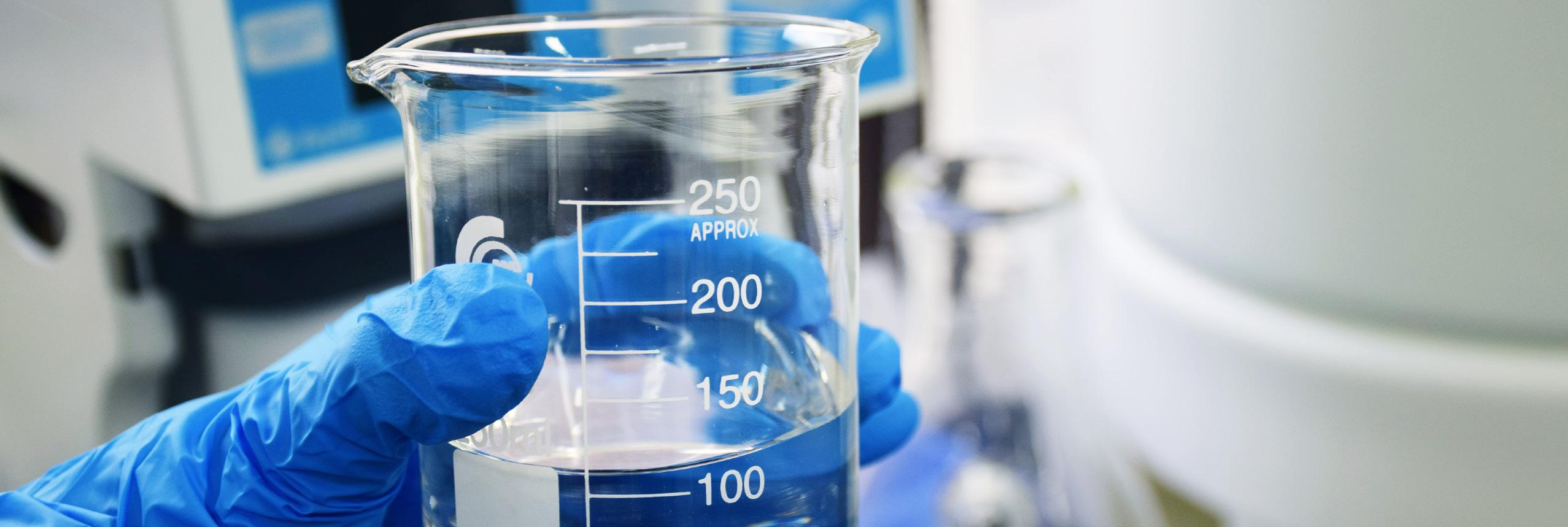
Likely Source of Contamination
Erosion of natural deposits; leaching from wood preservatives; corrosion of household plumbing systems.
Likely Source of Contamination
Erosion of natural deposits; leaching from wood preservatives; corrosion of household plumbing systems.
Total Organic Carbon (TOC) has no health effects. However, TOC provides a medium for the formation of disinfection byproducts. These byproducts include trihalomethanes (THMs) and haloacetic acids (HAAs). Drinking water containing these byproducts in excess of the MCL may lead to adverse health effects, liver or kidney problems, or nervous system effects and may lead to an increased risk of getting cancer.

*Results from 4/7/2021
REGULATED CONTAMINANTS
RADIOACTIVE CONTAMINANTS
GROSS ALPHA INCLUDING RADON & URANIUM (Monitoring period is 1/1/2020 – 12/31/2022) <4.05 Highest Level Detected pCi/l
**MCL is based on Gross alpha excluding radon and uranium.
TOTAL HALOACETIC ACIDS (HAA5)
Likely Source of Contamination Erosion of natural deposits.
TOTAL TRIHALOMETHANES (TTHMS)
43 Highest Running Annual Average ppb N/A N/A 80* 60*
Notes on Haloacetic Acids in drinking water
Some people who drink water containing haloacetic acids in excess of the MCL over many years may have an increased risk of cancer.
*MCL is based on a system-wide running annual average of several samples.
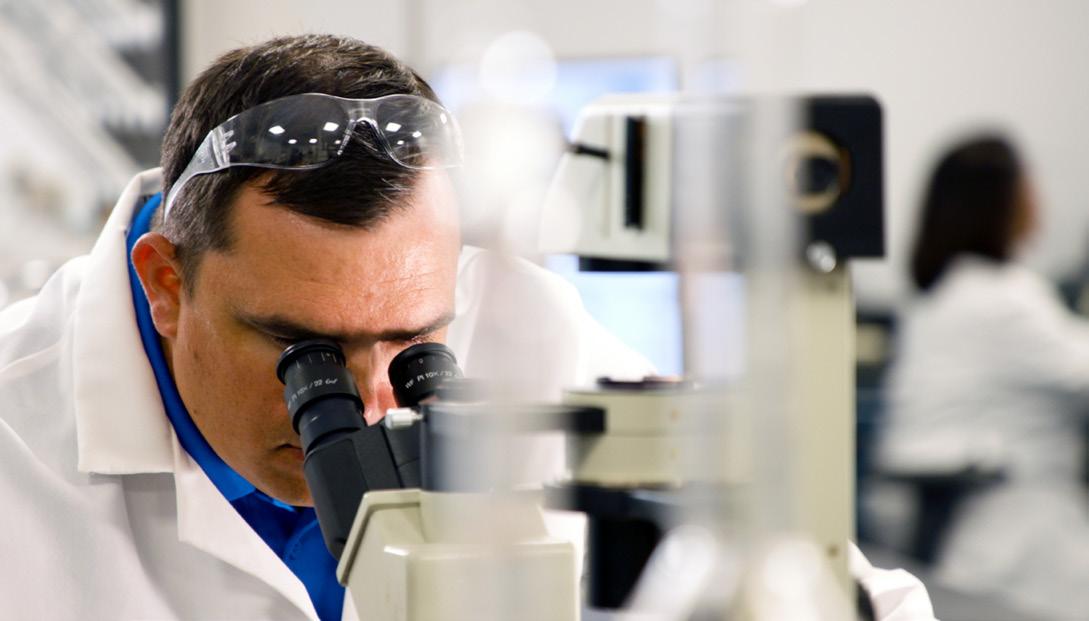
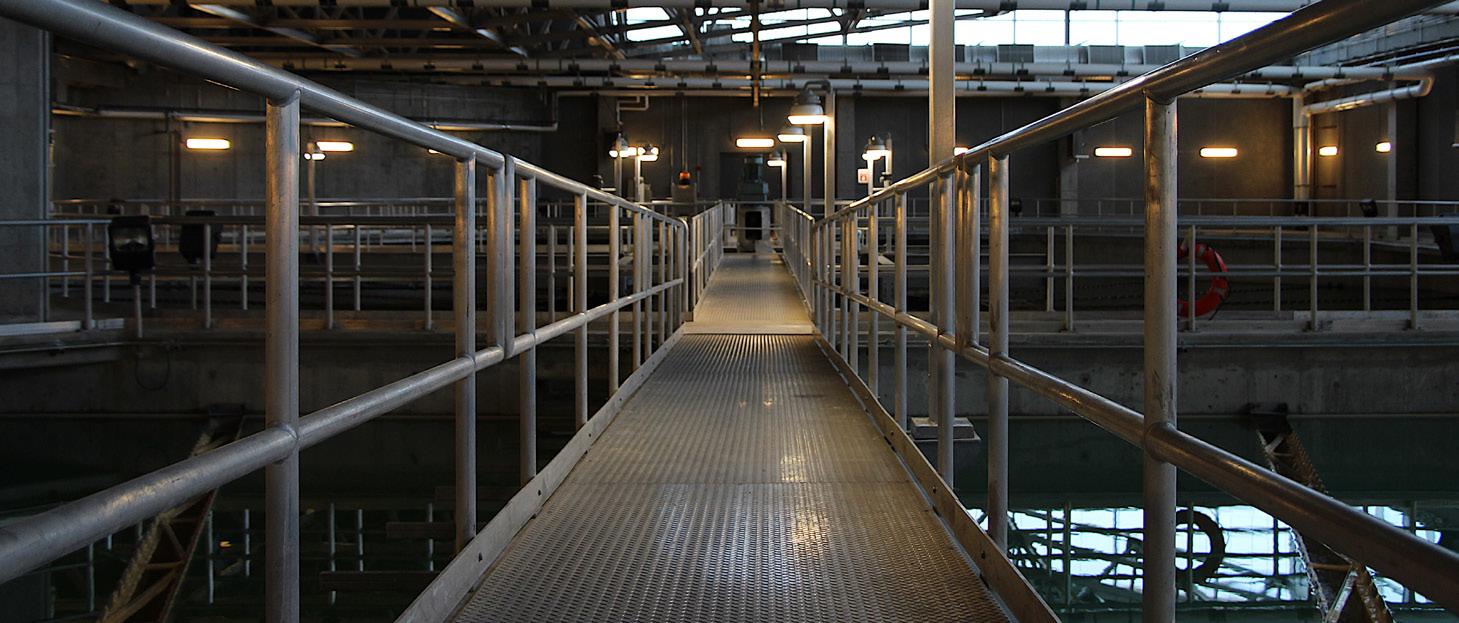
Notes on Trihalomethanes in drinking water
Some people who drink water containing trihalomethanes in excess of the MCL over many years may experience problems with their liver, kidneys or central nervous system, and may have an increased risk of cancer.
While your drinking water meets EPA’s standard for arsenic, it does contain low levels of arsenic. EPA’s standard balances the current understanding of arsenic’s possible health effects against the cost of removing arsenic from drinking water. EPA continues to research the health effects of low levels of arsenic, which is a mineral known at high concentrations to cause cancer in humans and is linked to other health effects such as skin damage and circulatory problems.
Erosion of natural deposits; run-off from orchards, glass and electronics production wastes.
Likely Source of Contamination
Run-off from herbicide used on row crops.
PFAS CONTAMINANTS
ALL CONTAMINANTS TESTED WERE FOUND BELOW THE PRACTICAL QUANTITATION LIMIT (PQL) INDICATED FOR EACH CONTAMINANT
Erosion of natural deposits; discharge of drilling wastes; discharge from metal refineries.
Erosion of natural deposits; discharge from steel and pulp mills.
Contamination Erosion of natural deposits; water additive to promote strong teeth; fertilizer discharge.
Erosion of natural deposits; run-off from fertilizer use; leaching from septic tanks, sewage.
Element of the alkali metal group found in nature, soil and rocks.
If your home has a lead water service line, you can reduce the chance of exposure to lead by using water only from the cold tap for cooking and drinking. If the tap has not been used in more than a half hour, flush water through the
The M.U.D. Board of Directors generally meets the first Wednesday of every month at the District’s Headquarters at 7350 World Communications Drive. Meeting dates and agendas are available at mudomaha.com or by calling 402.504.7147. Requests for special accommodations, alternative formats or sign language interpreters require a minimum of 72 hours advance notice. Access to our livestream and recorded board meetings is available at mudomaha.com
To ensure tap water is safe to drink, the Environmental Protection Agency (EPA) prescribes regulations to limit the amounts of certain contaminants in water provided by public water systems.

The Food and Drug Administration (FDA) regulations establish limits for contaminants in bottled water, which must provide the same protection for public health.
Drinking water, including bottled water, may reasonably be expected to contain at least small amounts of some contaminants. The presence of contaminants does not necessarily indicate that water poses a health risk. More information about contaminants and potential health risks may be obtained by calling the EPA’s Safe Drinking Water Hotline at 800.426.4791 or visiting water.epa.gov/drink.
Some people may be more vulnerable to contaminants in drinking water than the general population. Immuno-compromised people — such as those with cancer undergoing chemotherapy, people who have undergone organ transplants, people with HIV/AIDS or other immune system disorders, and some older adults and infants — can be particularly at risk for infections. These people should seek advice about drinking water from their health care providers.
The EPA and the Center for Disease Control and Prevention guidelines on appropriate means to lessen the risk of infection by Cryptosporidium and other microbiological contaminants are available from the Safe Drinking Water Hotline at 800.426.4791 or water.epa.gov/drink
Women who are pregnant, infants and children typically are more vulnerable to lead in drinking water than the general population. It is possible that lead levels at your home may be higher than at other homes in the community as a result of materials used in your home’s plumbing.
IS THERE LEAD IN M.U.D.’S WATER?
No. M.U.D. conducts monthly tests for lead and it is not detected in source (raw) water, in the finished water from the District’s water treatment plants, or in the water in the distribution system (water mains). M.U.D. produces stable, non-corrosive water. Lead is mainly a localized customer issue, which means some customers may own a lead service line or have plumbing that includes lead solder. Lead service lines may be found in areas of Omaha and other communities within our system in homes built prior to the 1930s.
The pipe that connects your household plumbing to the water main in the street is called a service line, which you own. M.U.D. customers can call Customer Service at 402.554.6666 to find out what the District’s records indicate about their service line material, or you can hire a licensed plumber to inspect the service line.
Yes. Customers who have partial or whole lead service lines (or the composition is unknown) installed before 1940 can request M.U.D. to test for lead. To request a test, call Customer Service at 402.554.6666. M.U.D.’s Water Quality Lab conducts the tests and submits results to the Nebraska Department of Environment and Energy (NDEE). In addition, M.U.D. has an agreement with Omaha Healthy Kids Alliance to test the drinking water in homes where there is a concern for lead.
HOW DO I FIND MORE INFORMATION?
M.U.D.’s water treatment is designed to not leach lead and copper, however there are steps you can take to further reduce the risk:
• Only use water from the cold tap for cooking and drinking.
• If the tap has not been used in more than a half hour, flush water through the faucet for 30 seconds up to 2 minutes before using it.
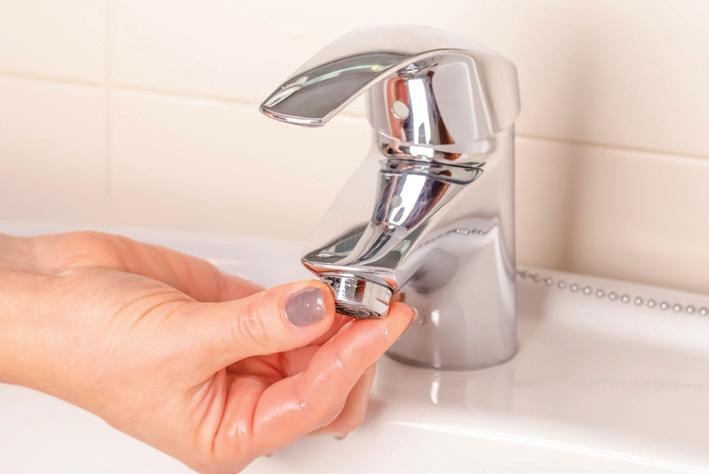
• Remove and clean the faucet aerators (also called screens) on a regular basis. To clean the faucet screen of debris:
1. Unscrew the screen.
2. Separate the individual parts.
3. Remove any sediment (mineral or rust buildup) on the screen and other parts. If necessary, soak the parts in white vinegar for a few minutes and scrub with a brush.
4. Reassemble the screen parts and re-attach to the faucet.
DO I NEED A WATER FILTER?
Use of a supplemental filter is a personal preference, however it can be harmful if not properly maintained. In selecting a filter, determine what substance(s) is/are to be removed and look for a filter that has an NSF/ UL certification to remove it. Information on plumbing fixtures and in-home filters is available from the National Sanitation Foundation by calling 1.800.NSF.MARK or visiting nsf.org
DOES THE FEDERAL GOVERNMENT MONITOR WATER FOR LEAD?
Yes. In 1991, the EPA published a regulation to control lead and copper in drinking water, known as the Lead and Copper Rule. The EPA revised the regulation in 2000, 2007 and 2021. Congress has also set limits on the amount of lead that can be used in plumbing products. These requirements were first enacted in 1986 and then reduced to lower levels in 2011.
The DHHS performs all of the testing for M.U.D.’s compliance with the Lead and Copper Rule. M.U.D.’s role is to deliver the sample kits to the customer, collect them and send them to NDEE for testing. M.U.D. is required to sample for lead and copper every three years. The most recent round of lead and copper testing was completed in fall of 2022. The 90th percentile (action level) was 7.59 ppb, well below the regulatory limit of 15 ppb.
Remove and clean faucet aerators (screens) on a regular basis.
Due to the proposed changes in the Lead and Copper Rule, M.U.D. continues to study the effects of customer-owned lead service lines in the community. This ongoing study includes testing the water in homes known to have lead service lines.
Visit mudomaha.com/lead for tips and related resources. You can call the EPA Safe Drinking Water Hotline at 800.426.4791, visit water.epa.gov/drink or call the NDEE Division of Public Health, Office of Drinking Water, at 402.471.2541.

Providing safe and healthy water to the Omaha metro community since 1913.
Buy Local
A gallon of tap water costs less than a penny.
50% of bottled water comes from the tap.
Tap water is tested more than bottled water.
From your tap to you, without plastic or pollution-producing shipping.
We can produce over 300 million gallons of drinking water daily.
• To help reduce system demands and maintain optimum water pressures, schedule your lawn watering based on your address. If your address ends in an odd number, water on Monday, Wednesday and Friday. If it ends in an even number, water on Tuesday, Thursday, Saturday or Sunday.
• Water in the early morning, between 4 to 10 a.m., to allow grass blades to dry, making them less susceptible to diseases. Watering is more efficient in the morning due to less evaporation and wind speed. Don’t water if it’s windy.
• Measure the amount of water applied to your lawn in a 15-minute period using a tuna can. Adjust the run time on your sprinkler system to deliver the required amount. Contact a lawn care professional if you need help.
• To conserve water, make sure your sprinkler heads are in working order and directed on your lawn and not on sidewalks, driveways and streets. Use sprinklers that emit large droplets to reduce losses due to evaporation.
• Check hose connections for leaks and repair them quickly. A single hose left on uses nearly 300 gallons of water an hour!
• Use a broom to clean patios, sidewalks and driveways. For more tips, visit mudomaha.com.

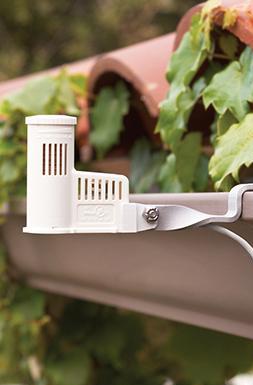
M.U.D. DRINKING WATER CONSISTENTLY MEETS OR EXCEEDS EVERY FEDERAL AND STATE REQUIREMENT.
According to the Safe Drinking Water Act, the Nebraska Department of Health and Human Services requires M.U.D. to make sure backflow preventers are installed and tested every year. We keep records of these tests and issue notices when testing is due. This requirement does not apply to lawn sprinkler systems unless they use booster pumps or chemical injection systems. Also check your city’s plumbing code for their regulations.
WHAT IS POTENTIALLY DANGEROUS ABOUT AN UNPROTECTED SILL COCK?
A sill cock permits easy attachment of a hose for outside watering. However, a garden hose with an unprotected sill cock can be hazardous when left submerged in swimming pools, watering shrubs, and when chemical sprayers are attached to hoses.
PROTECT YOURSELF FROM BACKFLOW INCIDENTS:
Check your faucets to make sure all faucet endpoints are above the flood level of the sink, tub, basin or other apparatus they supply.
Protect your faucet extensions by installing proper backflow prevention devices on all faucets capable of having a hose or other extension attached.
Check drain lines (refrigerator drink dispensers, water softeners, heat exchangers, etc.) to make sure there is an adequate air gap between the drain line and the floor drain or sewer line into which they discharge.
Never use unprotected faucets to fill non-drinking water containers (i.e., water beds, wading pools, stock tanks, hot tubs, etc.).
Filling up your pool? Make sure to take the hose out of the pool once it is filled to prevent water backflow.
M.U.D. meets all state and federal water quality standards so home water treatment devices are not necessary. Use of a supplemental filter is a personal preference, however it can be harmful if not properly maintained.
In selecting a filter, determine what substance(s) is/are to be removed and look for a filter that has an NSF/UL certification to remove it.
DOES USING A HOME WATER TREATMENT DEVICE GUARANTEE THAT MY WATER IS SAFE?

No. The U.S. EPA does not recommend home treatment devices as a substitute for public water treatment because of the difficulty in monitoring their performance. Home treatment devices are not tested or regulated by the federal government. Some, however, are tested by independent laboratories. If you want to use a water treatment device, carefully choose one according to the water conditions in your area. Also, be aware that a device needs to be properly maintained or it could cause water quality problems.
HOW OFTEN SHOULD I REPLACE THE FILTERS ON MY TREATMENT DEVICES LIKE THE WATER DISPENSER ON MY REFRIGERATOR?
All units require some maintenance, and it is important to follow the manufacturer’s recommendations for replacements. For example, activated carbon filters are designed to filter a certain amount of water. After that, the filters become clogged and ineffective.
